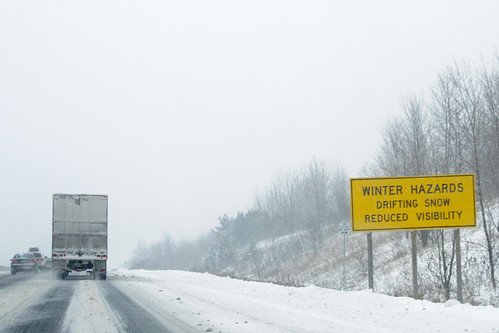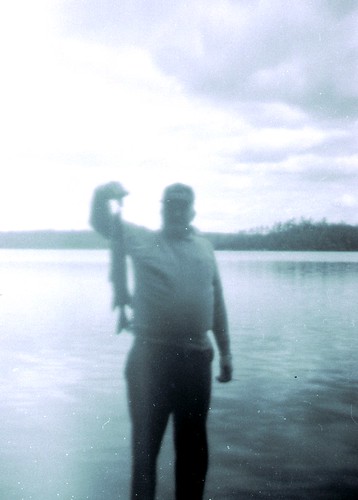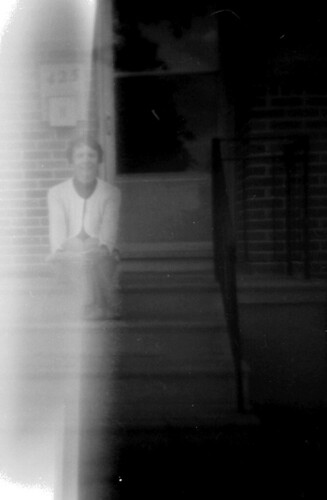With the holiday season over, the late winter grant-writing grind in full swing, and spring still separated from me by the inevitable February blahs, I need something shiny to cheer me up. Although, truth be told, a recent visit from fellow Occam’s Typewriter blogger Steve Caplan helped a bit. I can report that the real Steve is completely consistent with his online persona, and as a bonus delivers a good talk on endocytosis.
Also on the topic of cheerful news, Frank recently posted about a favourite shiny metal of his, Palladium, whose worth in this case far exceeds its monetary value. If you go and read his post, you’ll understand why, and learn a little organometallic chemistry as a bonus. I haven’t studied such things for, oh, twenty-five years or so, and I enjoyed his discussion of Ferrocene, which reminded me in turn of my favourite class of compounds from second-year organic chemistry, the Grignard reagents.

A generic Grignard Reaction. Image: Wikimedia Commons, public domain.
Backing up a bit to the end of the holidays, after a slightly nervous drive home in what can best be described as a blizzard, I was able to sit down and look through some precious metals of my own – in particular, the silver grains on some old black and white film negatives that my father rescued from a drawer in the downstairs bathroom, which once upon a time doubled as his darkroom.

The drive home along Highway 401. “Reduced visibility” was an understatement.
Long ago, like many others of roughly my age, I used Kodak Instamatic cameras, loaded with cartidges of either 126 or 110 format film. The cameras were, in a word, dreadful, but cheap. Neither 126 nor the teeny-tiny 110 version still exist. But I took enough photographs at the time to have an album full of the products of these old plastic boxes, some of which you can see on Flickr (126, 110).
Somewhere along the way, I ordered an even worse camera, from some box-top-collecting, mail-in scheme. This thing, which is sadly long gone, really was awful: all-plastic, tiny, and as I recall, sporting bright yellow panels on its front face. I really wish I still had it now. Fortunately a single roll of negatives still exists, perhaps the only one I ever put through it. What the film was, I can’t say – some kind of unperforated 35mm bulk stock, probably manually spooled. From the negatives, it seems I took it to school and to the cottage, as well as using it around the house.
And what a collection of delightfully crappy pictures I took. The dodgy film, home processing by my father, truly awful, light-leaking, plastic-lensed, zero-technology camera, and almost complete lack of photographic skill, combined with storage for more than three decades before scannning, have all combined to create some photos that can, at best, be described as “vintage”. But there is some gold in those silver crystals, like this wonderful, if off-centre and light-contaminated portrait of my mother on the front steps:
There are others – some blurry shots of a caterpillar, some double-exposed photographs of trees and houses, and a couple of boys and girls I knew at school. But the real surprise for me was a pair of photographs I don’t remember taking, documenting a long-standing piece of Wintle family lore: the day Uncle Mike fished a large and very disgruntled Northern Pike out of the lake at the cottage using, I kid you not in the slightest, a Ronco Pocket Fisherman.

Mike Howard, a predatory fish, and Desert Lake, Ontario.
A former Royal Marine deployed in the 1950’s in Southeast Asia, achieving the rank of Major, Mike later became an Officer Commanding his local Marine Cadet detachment. He was also involved with the Duke of Edinburgh’s Award program for youth, smoked a pipe, and sported an excellent, military-issue handlebar moustache. Originally from northern England, his accent was thick enough to puzzle my friends. He died in 2009 after a protracted battle with Motor Neuron Disease, several years after Mary passed. Mike was six and a half feet tall and burly, so that fish is a lot bigger than it looks!
Mike and Mary Howard were not biological relatives – Mary was a schoolfriend of my mother’s, and she and Mike were my Uncle and Aunt for as long as I can remember. Living in Crawley, just south of London and convenient to Gatwick Airport, we’d see them on every visit to the U.K. No strangers to the outdoors, they visited us in Canada several times, and joined us on camping trips to northern Ontario, and on one occasion all the way to Nova Scotia. They’d come up to the cottage every time they visited, too.
The day in question, as I recall, was dull and overcast, with choppy waves. Mike had already taken some good-natured ribbing over his fold-out fishing rod, remarkably similar to the modern version, although I recall the handle of his being an unpleasant brown. Casting from the shore, where I’d never caught anything bigger than a rather undersized Largemouth Bass, on about his third cast Mike began jerking the rod as though he’d caught something. I thought he was just joking around – until he hauled that Pike out of the lake, bludgeoning it into submission with a handy piece of driftwood before putting his fingers anywhere near its toothy mouth. In due course, the pike was cooked and eaten, and a bland and bony meal it made.
Awful though that photograph is, it and another adjacent to it on the roll are, as far as I know, the only visual record of this memorable episode from my childhood. I had no idea these were hiding in my parents’ basement. The grains on the film may be made of silver, but to me this find is pure gold.
More photographs from this roll can be found here.




Kodak Instamatic! Such memories. I had a 126-cartridge camera which I took with me to Israel in 1985. While on the Mount of Olives and finding myself short of film, an Arab hawker conveniently turned up with panniers of Kodak 126 cartridges on his donkey, so I bought some and snapped away. That film must have been really, really tough, for despite being (a) well past its expiry date even when I bought it, and (b) roasted for who knows how many hours on the back of a donkey, I got the most wonderful pictures out of it – gloriously saturated blues and yellows. Which is fortunate, because the landscape at the time was predominantly blue (sky) and yellow (ground.)
Excellent story. 😀
My 126 shots were not so impressive, although most of what’s on Flickr is re-photographed from very old prints, or scanned with a non-professional grade scanner and not properly colour-corrected. I am sorting out an improvised macro photography rig to re-photograph some of the negatives, so we’ll see how that turns out. 🙂
Did your camera use those wonderful flash cubes? I can still remember buying them. They used to have them hanging by the supermarket checkouts, along with the racks of chocolate bars and the like.
What was roasted? The film or the donkey?
The film. But the donkey was quite warm, I expect. Completely uncoincidentally I ate roast donkey in China in 2010. I doubt that it was the same donkey, though.
I’m not sure if I’m being praised or insulted, here. What’s that supposed to mean “Consistent with my online persona?!”
Well, I’ll take it as a compliment 😉
What I meant was, “Steve is just as personable in person as on t’interwebz, and there were no unpleasant surprises over lunch.” 😉
I used my share of Grignard reagents when I was in grad school. And I remember the Instamatic, although I don’t think I have any pictures taken with it.